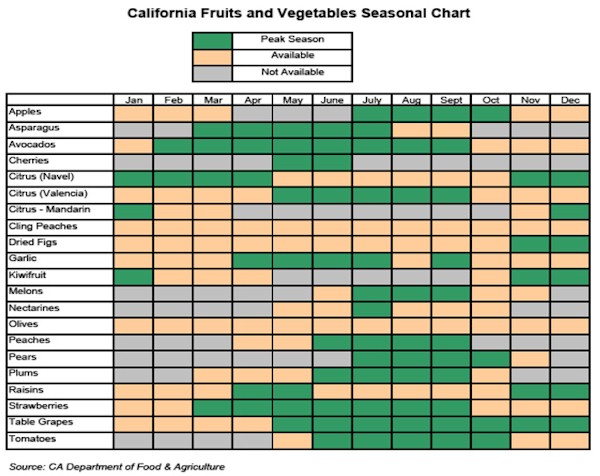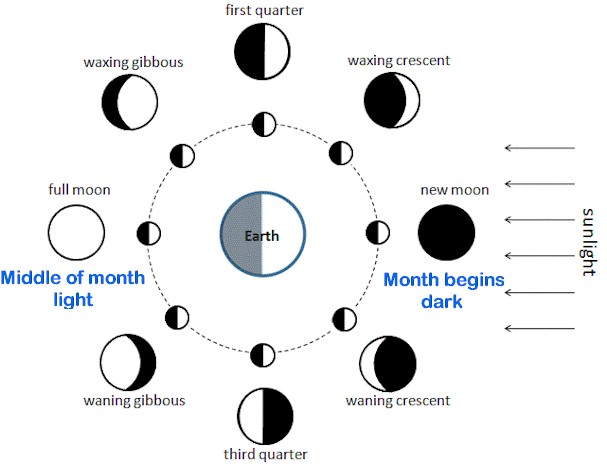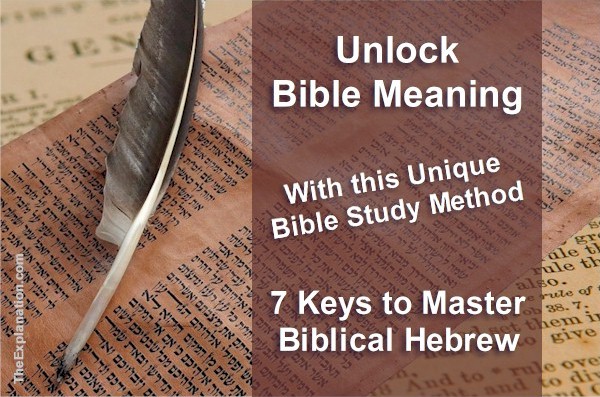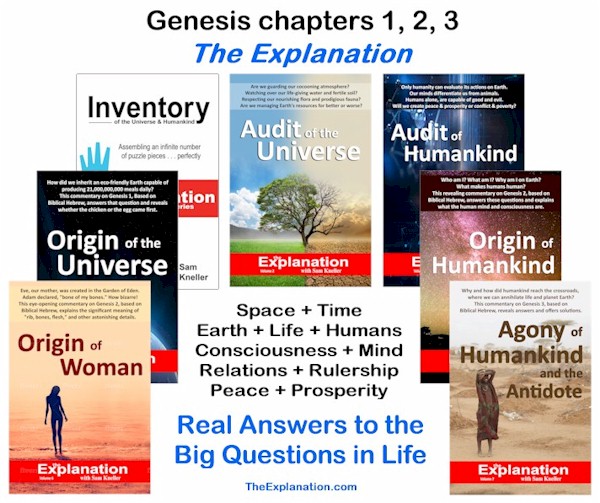Contents
Day 4 of creation sees God regulating the Sun and Moon to establish our calendar of seasons, days and years

Day 4 of Creation. God regulates the two lights to govern time and gives Earth its calendar of seasons, days and years
Day 4 of creation is the pivotal day of the seven day week. One would’ve thought that the establishment of day and night on the first day would’ve incorporated what we’re going to see here, but it didn’t, or it wouldn’t have a separate day of its own.
(Origin of the Universe, chapter 8.8)
The sun and the moon are the stars of day 4 of creation in these Bible verses:
14 And God said, Let there be lights in the firmament of the heaven to divide the day from the night, and let them be for signs (H226), and for seasons (H4150), and for days, and years:
15 And let them be for lights in the firmament of the heaven to give light upon the earth: and it was so.
16 And God made (H6213) two great lights; the greater light to rule the day, and the lesser light to rule the night: he made the stars also.
17 And God set them in the firmament of the heaven to give light upon the earth,
18 And to rule over the day and over the night, and to divide the light from the darkness: and God saw that it was good.
19 And the evening and the morning were the fourth day.
God made
“And God made two great lights…” The Hebrew word made is asa (H6213) meaning to do or to make in the broadest sense, also including the KJV translation appoint (see Further Study below). The point being, this is not the moment of creation of these orbs that had already taken place a few billion years previous, as seen in Genesis 1:1.
Day 4 of Creation week is the making or appointing of the sun and moon to a specific function.
The movement of the Earth and Sun established the Day and night, light and darkness routine. God set this in motion on Day 1, where, as explained, we had a clear emphasis on the light and dark.
On Day 4 of creation, the emphasis is quite different. The celestial bodies are elements for establishing and measuring time: for signs to designate seasons, days, and years. These heavenly bodies, as majestic as they might be, are nothing but accumulated matter and energy, they are certainly not instruments of worship or prediction, they are there to help us measure and follow time. Frankly, I could write a book to explain Day 4 of creation, and I’ve started it! But not here. Although I will whet your appetite and maybe provoke you into some new Bible study.
The greater light (verse 16), the sun, establishes the year. The lesser light, the moon, sets the months. This verse does not explicitly mention months, but it implies them when referring to the moon and seasons. Months are portions of the year, and the Bible generally numbers them (Gen. 7:11, 8:4, etc.) rather than giving names as we do. There is a focus on the calculation of the calendar. That’s the key to day 4 of creation.
There are many supposed controversies regarding Genesis. One is, how can there be light from the sun on Day 1 when its creation was on Day 4 of creation? Aha, a contradiction! Well, I just explained what’s going on. You have to look a little deeper and further than a cursory read of an English Bible. Detractors and even supposed theologians quickly and readily point these supposed discrepancies out. Don’t fall into the trap. Learn to use Bible tools properly and dig out the deeper meaning of God’s word. As we make progress, all these interrogations will fall into place.
Let’s focus on a deeper meaning of day 4 of creation. What is the importance of the two lights to establish the calendar year and its seasons? The sun and moon are signs (226) as it clearly states in verse 14. Study H226 in Strong’s concordance. You’ll see what it means: miracle and token, as evidence of something. The word Signs (H226) comes from H225, which implies consent. Again, these signs are not to be worshipped but are evidence of an agreement (consent) between their Maker and those made, you and me. As inhabitants of Earth, we witness the effects of the sun and moon. I’m referring to the seasonal agricultural harvests.
In the previous chapter of Origin of the Universe, I referred to how we need 22.8 billion meals a day to feed the planet. Those meals are available only because there are agricultural seasons. The food on your plate is present because those two lights are regulating the growing seasons. Do you see the coherent completeness — the signs, evidence, miracles — to what day 4 of Creation is referring? From the sun and moon to the food you eat, and all the steps in-between, which I enumerated in Inventory of the Universe.
These celestial bodies, as majestic as they might be, are nothing but accumulated matter and energy, they are not instruments of worship or prediction... they are there to help us measure and follow time. Share on XWe take specific periods for granted: seasons, days, and years. In this verse, we have the astronomical making (appointing) of our calendar, universally established by universally visible signs. No matter how we slice it, with the movements of the earth, moon, and sun, we establish days, months, years, and seasons.
I draw your attention to this order of time measurement because, in the Bible, it’s not presented the way I wrote it: days, months, years, and seasons. In verse 14, we see: for seasons, for days and years. It does not mention months and the days and years, which, I think, we city folk would tend to announce of first importance, are grouped and mentioned last. The seasons are given the prime first position, as a separate entity, giving them the limelight.
In our Western city-centered cultures, although megalopolises are a worldwide phenomenon, we have no room for seasons, barely realizing their existence other than certain holidays and the heating bill. Big mistake, because moad(im), the Hebrew word for season(s), has a crucial unsuspected role to play in assembling our jigsaw puzzle. I will even go so far as to say that it is one of the two main concepts, both mentioned in the creation week, without which it is impossible to assemble the pieces of God’s plan.
The seasons follow the flora of Day 3. Seasons are inseparable from the cycle of the greenery around us. Today we fly roses around the world from some unlikely places: Columbia, Ecuador, Kenya, and Ethiopia, the biggest exporters. You can find them 365 days a year at your florist. In reality, roses are a spring and summer flower.
The same is true of all flowers, vegetables, fruit, and deciduous trees. Each has a season, each has a cycle, and together they make for a full year of available sustenance and beauty. A functional nutritionist will tell you to eat the fruit in season, to intake its vitamins, minerals from its freshness and wholesomeness. That should encourage us to ingest a wider variety of fruits and vegetables, keeping us closer to local produce and our earthy, seasonal rather than our global industrial dependency.
Take greenhouses, they often force grow vegetables in vitaminized and mineralized solutions, never using earth. Or, battery chickens which never see the sun, causing us to devalue seasons. Audit of the Universe revealed how modern agriculture is more and more divorced from land, water, and seasons. We have forgotten the consent — the relationship between the two lights and the growing seasons — that provides our meals and consequently our very health. Ecology and sustainability are totally dependant on those two lights being exactly where they are in the sky and their orbits relative to Earth; this is the visible physical result of Day 4 of Creation.

The chart displays a yearly calendar of vegetables grown in season; this depends on where you live, but there’s food, flowers, and greenery year-round, thanks to the two lights.
This appointment of seasons coupled with flora places us squarely in a subject you may have wondered why we broached in Inventory of the Universe, chronobiology. We see in this creation recital the establishment of time measurements; from nature, we know that animate flora, trees, flowers, and specifically the plants, vegetables, and fruit consumed by humankind grow following these time cycles. When grown and consumed according to their proper time cycles, produce gives the best yield with the best quality.
What I’m getting at here is a central theme of humankind around which many of their yearly activities revolve: the harvest. Again, we in the West have lost our knowledge and closeness to the sowing, growing, watering, and weeding, leading to harvest.
Historical and Biblical culture, both Old Testament and New Testament, revolved around the harvests. No further details here, but we shall be returning, in-depth, to the subject of the SPIRITUAL harvest. It unlocks the time measurement or timeframe of the entire puzzle of God’s plan for humankind we are assembling; this is the real establishment of peace and prosperity on Earth.
Getting back to the calendar established by the combined movements of the Sun, Moon, and Earth, here’s a quick lesson in astronomy where our present Gregorian calendar, named after the Pope and dating to 1582, has clouded our comprehension of a simple but fundamental point.
- Day: One revolution of Earth (on itself)
- Month: One revolution of the Moon around Earth
- Year: One revolution of the Earth around the Sun
Just note for the time being that there’s no movement of these bodies, or any others to designate the universally accepted seven day week. So, what is the origin of the seven day week?
Our Gregorian calendar does not take into account the movement of the Moon around the Earth. What is known as a lunar month lasts about 29.5 days, not the general 30 or 31 days we have today. Because the Gregorian calendar is out of sync with the 1st day of the lunar month, the new moon can fall on any day of our Gregorian month.
So what? Well, a new moon happens when the moon is between the Sun and Earth, hence there’s no reflection of the Sun’s light, and it’s a pitch-black, dark night. Whereas, for a full moon, in the middle of the lunar month, the moon has traveled halfway around the Earth. Our planet is between the Moon and the Sun, and we receive the full reflected light of the Sun from the Moon.

Day 4 of creation. God established the calendar with the new moon appearing dark from Earth while at the full moon in the middle of the month it appears light
The lunar calendar, among other things, focuses us on dark and light again. Interestingly, in that order, for the month starts in the dark and progresses into the light, similar to night > day and evening > morning.
None of this is coincidental happenstance. On day 4 of creation, God appointed it to be so. By placing Earth, Sun, and Moon in exact positions, He established precise time measurements that we call the calendar. Remember, signs means miracles (Gen. 1:14). I’m not asking you to believe any of this, think about the more in-depth Biblical instruction.
Other than clothing, the one most common object we carry around with us is our watch (and in 2020, maybe our mobile phone!) to keep track of time. Still, we don’t understand how the calendar, chronobiology, seasons, harvests fit together, how they are integral pieces in the puzzle.
Do you have time, are you willing to take the time, to understand the real meaning of time and what time it is?
Day 4 of creation puts time into perspective, The moadim (the seasons in verse 14) established by the respective movements and positions of the Sun and Moon relative to the Earth are the primary keys that assemble the timeframe of the whole puzzle. Keep your watch on.
This blog post is an excerpt from chapter 8.8 of the book Origin of the Universe
Further Study
In Genesis 1:16, the Hebrew word made is asa (H6213) meaning to do or to make in the broadest sense; this does not refer to the creation of the sun and moon on day 4 of creation.
Go over to UnlockBibleMeaning.com. Find Genesis 1:16, switch to Strong’s concordance, and click on H6213 (the Hebrew word for made). Below Strong’s entry hover over and click on Hebrew Concordance for H6213. You’ll get all those verses on the left where you’ll find the two below:
Psalms 104:19, “He [God] appointed (H6213) the moon for seasons (H4150): the sun knows his going down.” This same word, made, is also translated govern in 1 Kings 21:77, “And Jezebel his wife said to him, Do you now govern (H6213) the kingdom of Israel?” Notice, The Biblical Hebrew word H6213 עָשָׂה ʻâsâh – made – incorporates the concept of appointing and governing. After all, if you make something, it’s for a purpose. God appointed the sun and moon to govern our calendar.
Notice “God appointed the moon for seasons.” The word seasons in Psalm 104:19 is identical to Genesis 1:14. The celestial bodies were not appointed to be worshipped. They were set in place to govern the daily, monthly, seasonal, and yearly cycles of the calendar for a crucial reason, which is another subject.
Note also, at the end of verse 16, the translators added the word made referring to the stars. The Hebrew says, and the stars. Almost an afterthought following the Sun and moon, although they do give light whereas the moon only reflects the Sun’s light to Earth.
Dig Deeper into The Explanation
Online Study Courses to Uncover the Mystery of Adam and Eve’s Nakedness… with no fuss. Free video mini-course revealing the God-intended meaning of Scripture via Biblical Hebrew. It’s so easy, it’ll blow you away. Join now and add new motivation to your Bible study.
Join The Explanation Newsletter to stay informed of updates. and future events. No obligations, total privacy, unsubscribe anytime, if you want.
The Explanation series of seven books. Free to read online or purchase these valuable commentaries on Genesis 1-3 from your favorite book outlet. E-book and paperback formats are available. Use this link to see the details of each book and buy from your favorite store.

Since you read all the way to here… you liked it. Please use the Social Network links just below to share this information from The Explanation, Day 4 of Creation: Sun and Moon Establish Calendar



Trackbacks/Pingbacks